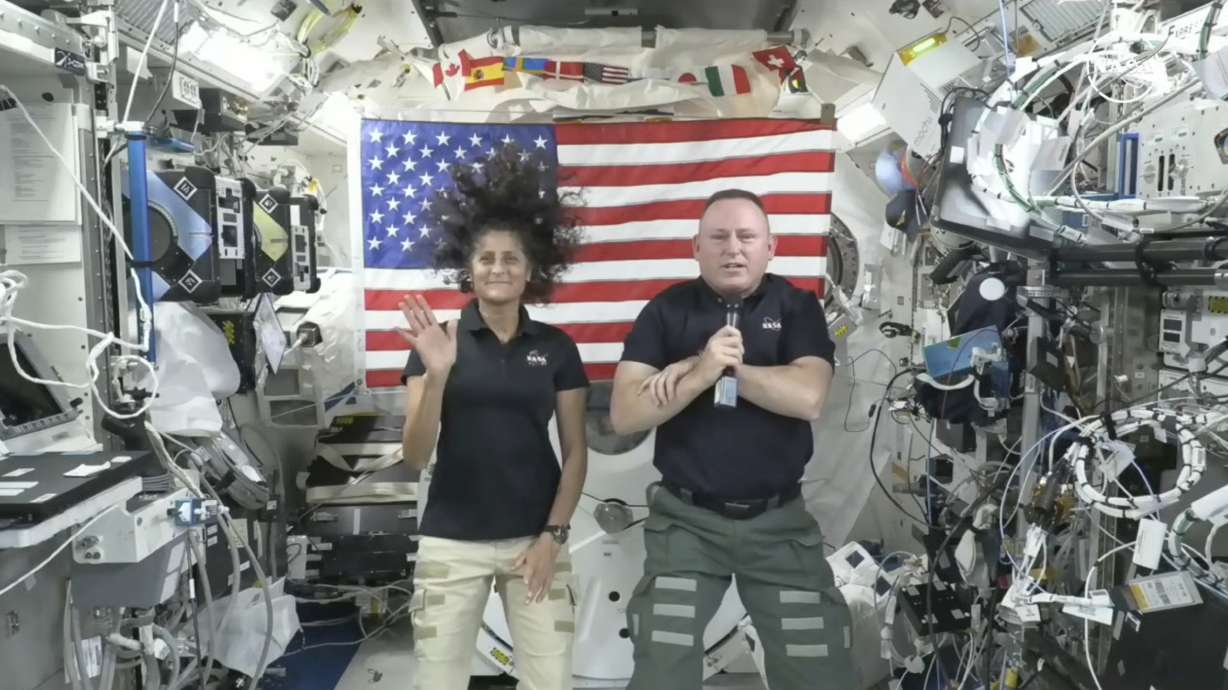CAPE CANAVERAL, Fla. — Two astronauts who were supposed to be back on Earth weeks ago said Wednesday they are confident the Boeing space capsule can bring them back safely despite a series of nasty glitches.
NASA test pilots Butch Wilmore and Suni Williams boarded Boeing’s new Starliner capsule early last month, the first humans to ride inside. Helium leaks and failed boosters nearly kept them from reaching the International Space Station and have kept them there far longer than planned. Officials say they won’t be able to return until late July.
In their first press conference from space, the pair said they expect to return once the thruster tests are complete here on Earth. They said they have no complaints about the extra time in space and that they enjoy helping the space station crew. Both have previously spent time at the orbiting lab, which is also home to seven others.
“I have a very good feeling in my heart that the spacecraft will bring us home without any problems,” Williams told reporters.
The test flight was scheduled to last eight days and end on June 14.
Steve Stich, director of NASA’s Commercial Crew Program, said the Starliner astronauts might not be back until late July. The goal is to have them back before SpaceX delivers a new crew in mid-August, but that could change, he noted.
This week, NASA and Boeing are attempting to duplicate the Starliner’s thruster problems on a brand-new unit at White Sands Missile Range in New Mexico, one of the most important landing sites in the U.S. Western desert. The problem is in the propulsion system used to maneuver the spacecraft.
Five thrusters failed as the capsule approached the space station on June 6, a day after launch. Four have since been reactivated. Wilmore said there should be enough working thrusters to get him and Williams out of orbit. There are also larger engines that can step in if needed.
“That mantra that you’ve heard, ‘Failure is not an option,’ that’s why we’re here right now,” Wilmore said. “We trust that the tests that we’re doing are the tests that we need to do to get the right answers, to give us the data that we need to come back.”
Boeing and NASA consider the ground tests essential to determining what may have gone wrong, since that part of the capsule — the service module — is discarded before landing. The leaks are also in that discarded section.
So far, tests haven’t been able to reproduce the high temperatures reached during the flight, Stich said. Managers want to make sure the suspect boosters aren’t damaged before bringing Starliner back. They were fired more often than expected early in the flight, and the extra demand on them could have caused them to fail, Stich noted.
At the same time, ground tests are being conducted to better understand the helium leaks, which could be caused by poor seals. Officials have previously said there is still enough helium left for the trip home.
Hurricane Beryl delayed some of the work. Johnson Space Center in Houston, home to the mission control centers for both NASA and Boeing, was closed to all but the most critical personnel earlier this week.
Boeing’s Mark Nappi stressed that Starliner and its crew can return immediately in the event of an emergency. While the company does not believe the boosters are damaged, “we want to fill in the gaps and do this test to assure ourselves of that.”
NASA ordered the Starliner and SpaceX Dragon capsules a decade ago for astronaut flights to and from the space station, paying each company billions of dollars. SpaceX’s first astronaut taxi flight was in 2020. Boeing’s first crew flight was repeatedly delayed by software and other problems.
There have been no discussions with SpaceX about sending a rescue capsule, Stich said.
The Associated Press Health and Science Department receives support from the Howard Hughes Medical Institute’s Science and Educational Media Group. The AP is solely responsible for all content.
